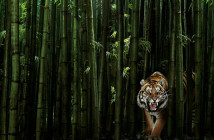Sea lions, giant turtles, colorful fish, lush birds are but some of the many animals found in the Galapagos Islands of the Pacific Ocean. The Ecuadorian archipelago consists of thirteen main islands, several islets and is a thousand kilometers from the coast of South America. Due to strict conservation measures this place was removed from the list of endangered world heritage sites by UNESCO and is ideal for tourists who love to discover about wildlife.
Galapagos will always be connected to the naturalist Charles Darwin as the place of inspiration for Darwin’s Theory of Evolution. The islands balance between much-needed tourism and preservation is hotly debated topic.
In order to protect the ocean and biodiversity, last month Ecuador opened a new sanctuary to protect the world’s largest shark colony. This sanctuary extends over 38,000 square kilometers around the islands of Darwin and Wolfe and will result in a total ban on fishing activities and extraction in order to protect the local ecosystem.
This was created to protect the hammerhead shark, a species in danger of extinction. The organisation National Geographic supports this sanctuary, and along with other organizations and institutions, want to see the development of management plan that will integrate conservation and tourism.
These enchanting islands attract visitors worldwide. Who would not want to snorkel and observe the wonders of the marine flora and fauna? Tourists can get up close and personal with animals without feeling threatened, as large terrestrial predators could not come and settle in the archipelago.
The main airport of the archipelago is on the island of Baltra. In order to go onto other islands you will have to catch a boat. The best way to know the main islands is via a cruise.
But there are some restrictions for those visiting the island. No leaf or stone can be removed. A naturalist guide always accompanies guests. Ecuador’s government and other institutions are creating ways to protect the Galapagos, considered by scientists to be a ‘living laboratory’ of biology. Exploring the wildlife of the Galapagos is an amazing experience.





